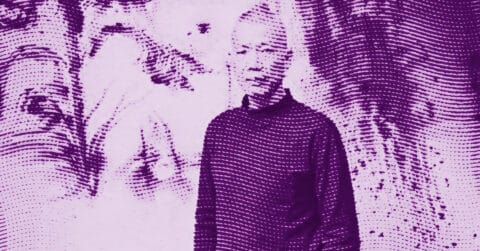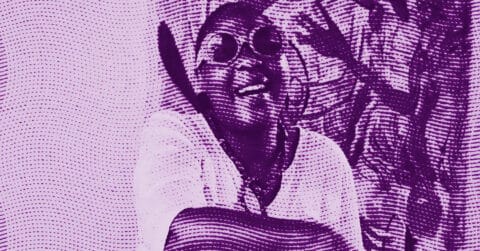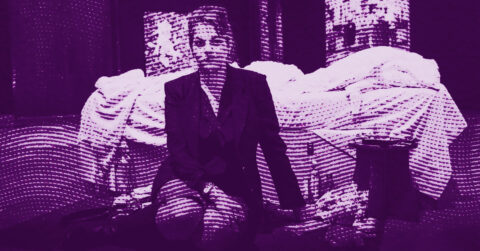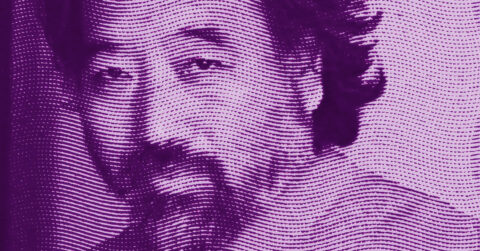Listen to me carefully, you bunch of snobs. Ai Weiwei is not just an artist. He is a cultural phenomenon, a political force, a meteor traversing our collective consciousness with the subtlety of a steamroller. In an artistic world populated by careerists without substance, Ai stands as a glorious anomaly, a creator who does not content himself with making pretty objects to adorn your sterile apartments.
Each time Ai breaks a millennial Han urn or plunges ancestral vases into industrial paint with garish colors, he is not just making an iconoclastic gesture. He is practicing cultural alchemy, transforming the paralyzing respect for the past into a vibrant urgency that questions our present. It is not an act of destruction but of transmutation. These vases do not disappear, they are reborn as embodied questions.
Contemporary art is full of posers playing at rebellion from their air-conditioned galleries. Ai, on the other hand, knows the real price of dissidence. His art was born in exile and persecution, shaped by the direct experience of repression. In 2011, when the Chinese government detained him for 81 days without charge, his works acquired a dimension that most artists will never reach, that of total, visceral, undeniable authenticity.
Take “Sunflower Seeds” (2010), that monumental installation composed of 100 million porcelain sunflower seeds, each handmade by 1,600 Chinese artisans from Jingdezhen. At first glance, it’s just a huge pile of small objects. But on closer inspection, one realizes the staggering amount of human work contained in this gray sea. Each seed, unique but visually identical to the others, becomes a metaphor for the individual in the Chinese social mass, both insignificant and fundamental.
But what really sets Ai apart from the cohort of conceptual artists is his ability to create works that resonate simultaneously as political manifestos and as objects of breathtaking beauty. His installations of steel rods recovered after the 2008 Sichuan earthquake, carefully straightened and arranged in telluric undulations on the ground, are both a denunciation of government corruption that led to the collapse of poorly constructed schools and a formal meditation on resilience and transformation.
I can’t help but think of Walter Benjamin’s theories on the aura of works of art [1]. Benjamin argued that the mechanical reproduction of works of art diminished their “aura,” that almost mystical quality that emanates from the original. Ai completely reverses this notion. When he reproduces millions of porcelain seeds or hundreds of Forever bicycles, he does not dilute the aura, he multiplies it exponentially. Each repetition is not a copy but a reaffirmation, an act of resistance through accumulation.
Ai’s work establishes a fascinating dialogue with the Chinese tradition of ritual sacrifice. In ancient China, the sacrifice of precious objects served to communicate with the spiritual world and to affirm power. When Ai drops a dynastic urn, he is not just destroying an artifact, he is reactivating this ancestral ritual in a contemporary context, sacrificing the past to invoke a different future. The sound of breaking porcelain becomes a prayer for a new world.
This ritual dimension is also found in his monumental installations like “Straight” (2008-2012), where the 150 tons of steel rods methodically straightened after being recovered from the rubble of Sichuan schools become a memorial to the disappeared children. The work is not just conceptual, it is deeply liturgical, transforming physical work into a form of collective mourning and commemoration.
Unlike artists who seek to shock to boost their market value, Ai’s provocative nature is always rooted in a deep reflection on power structures. His works are not stunts but calculated interventions that reveal the hidden mechanisms of authority. When he methodically documents the names of the 5,219 schoolchildren who died in the Sichuan earthquake, information that the Chinese government refused to disclose, he uses art as a tool of truth against institutional erasure.
Ai’s relationship with digital media is also remarkable. Where many contemporary artists use social platforms as mere promotional showcases, Ai understood early on that Twitter, Instagram, and blogs could be artistic mediums in their own right. His use of social networks was not incidental but central to his practice, a logical extension of his conceptual approach that blurs the boundaries between art and life, between the artistic gesture and political action.
This intuitive understanding of digital media recalls Marshall McLuhan’s theories on the “message of the medium” [2]. McLuhan argued that the medium itself, regardless of the content it conveys, exerts a profound influence on society. By embracing new digital media as an integral part of his artistic practice, Ai is not just adopting new tools, he is fundamentally redefining what it means to be an artist in the era of globalized information.
I have always thought that the best artists are those who manage to be perfectly of their time while being deeply timeless. Ai embodies this contradiction with disconcerting ease. His works are anchored in the political crises of the moment, migration, surveillance, censorship, but they resonate with fundamental questions that span all of human history: the relationship to power, collective memory, the value of things, individual dignity.
There is something fundamentally cinematic in the way Ai constructs his works. Take “Fairytale” (2007), where he transported 1,001 ordinary Chinese people to the Documenta in Kassel. This work is not simply an installation or a performance, it is a complex narrative that unfolds in time and space, with characters, plot twists, moments of tension and resolution. Ai does not create static objects but dynamic experiences that envelop the viewer in their own internal logic.
This cinematic quality is not accidental. Ai studied cinema at the Beijing Film Academy, and this training is evident in his mastery of framing, conceptual editing, visual rhythm. His photographic installations like “Study of Perspective” (1995-2011), where he gives the finger to various institutions of power around the world, function like discontinuous film sequences that, together, form a coherent narrative on the relationship of the individual to authority.
What I like about Ai is his ability to remain authentic despite his global fame. In an artistic system where commercial success often leads to a dilution of initial radicality, Ai continues to create works that disturb, question, refuse intellectual comfort. His transformation from a figure of Chinese dissidence to an international artistic icon could easily have led him to more symbolic than substantial gestures. Instead, he used his expanded platform to amplify his message, to extend the reach of his intervention.
Ai’s art is deeply political without ever falling into simplistic didacticism or inverse propaganda. It does not offer easy answers or comforting slogans. On the contrary, his works open spaces for questioning, create productive zones of discomfort where the viewer is invited to reconsider their own positions. It is an art that does not tell you what to think, but that forces you to think.
In “Human Flow” (2017), his documentary on the refugee crisis, Ai abandons the comfort of artistic metaphor to confront reality head-on. In doing so, he further blurs the distinction between artist and activist, between work of art and social intervention. This film is not just a documentary, it is a logical extension of his artistic practice, a work that refuses to remain confined to spaces dedicated to art and insists on existing in the real world.
This porosity between art and life characterizes Ai’s entire approach. He does not create works that comment on the world from a safe aesthetic distance, he makes interventions that actively participate in the transformation of this world. His art is not a passive reflection but an active force, a catalyst for change.
I must admit that I have sometimes been annoyed by certain aspects of Ai’s work. His tendency to self-mythification, his media omnipresence, his propensity to recycle certain iconoclastic gestures, all of this could easily be interpreted as a calculated artistic narcissism. But every time I start to doubt, he produces a work of such urgency, such necessity, that my reservations crumble.
Because at the core, what sets Ai apart from so many other contemporary artists is precisely this quality of necessity. His works do not seem to be the products of a carefully orchestrated career or an abstract search for formal novelty, they appear as the inevitable manifestations of an artistic conscience confronted with the fundamental contradictions of our time. They exist because they must exist.
In an artistic landscape where so many works seem interchangeable, generic, mass-produced to satisfy a voracious market, Ai’s art retains an irreducible singularity. One can love or hate what he does, but one can never confuse it with the work of another artist. This distinctive signature is not the result of an immediately recognizable visual style, but of a conceptual and ethical coherence that runs through all his creations.
Ai Weiwei is more than an artist, he is an active principle, a benign virus that infects the immune system of contemporary art to force it to react, to defend itself, to evolve. His greatest achievement is perhaps not a specific work, but the transformation he has brought about in our collective understanding of what art can and should do in the world.
Faced with his work, we are compelled to reevaluate our own positions, our own compromises, our own silent complicity with the systems we claim to criticize. It is an art that does not leave you unscathed, it changes you, disturbs you, displaces you. And isn’t that, deep down, what we secretly ask of art? Not that it comforts us in our worldview, but that it expands it until it cracks under the pressure of new perspectives.
So yes, you bunch of snobs, Ai Weiwei is great, not despite his contradictions but precisely because of them. In an artistic world that so often rewards superficial coherence at the expense of authentic complexity, Ai remains gloriously, necessarily, vitally contradictory. And that is perhaps his most precious lesson: that true art does not resolve tensions, it inhabits them.
- Benjamin, Walter. The Work of Art in the Age of Mechanical Reproduction. French translation by Lionel Duvoy. Éditions Allia, 2nd edition, October 2011.
- McLuhan, Marshall. Understanding Media. Seuil, Paris, 1968.
















